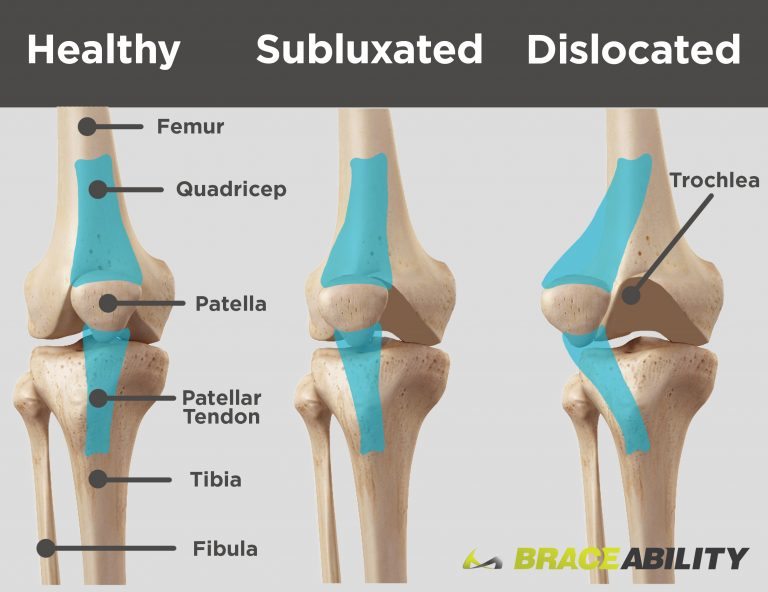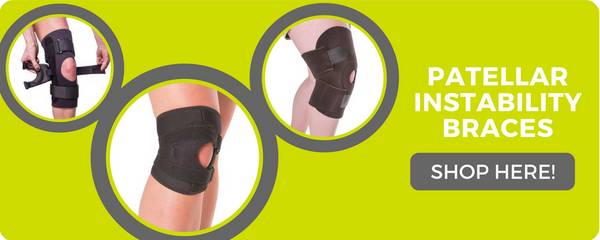Why Your Kneecap Moves from Side to Side: Patella Instability & Dislocation Explained
Do you suffer from patellar (kneecap) instability? Well, you’re not alone! Feeling like your kneecap is unstable is a common complaint.
 Unlike most of your other bones, the reason your kneecap (patella) moves freely is that it is not actually attached to another bone in your body. Your kneecap is the largest sesamoid bone in your body and is kept in place by a couple tendons, your quadriceps tendon and patellar tendon.
Unlike most of your other bones, the reason your kneecap (patella) moves freely is that it is not actually attached to another bone in your body. Your kneecap is the largest sesamoid bone in your body and is kept in place by a couple tendons, your quadriceps tendon and patellar tendon.
A sesamoid bone is a small independent bone or bony nodule developed in a tendon where it passes over an angular structure, typically in your hands and feet. Put simply, while protecting what is underneath it, sesamoid bones are not fused to anything. In fact, if you extend both of your legs to where it takes the pressure off of your knees, you should be able to move both kneecaps!
On the other hand, patellar instability isn’t always “normal”! Sometimes your muscles and ligaments are unable to keep your patella in your patellofemoral groove (trochlear groove). If you experience a patellar subluxation or patellar dislocation, your kneecap is likely being pulled towards the outside (lateral side) or inside (medial side) of your knee. When this happens, your kneecap does not slide centrally within its groove as it should. This can cause lots of knee pain and discomfort. Your kneecap has a tendency to dislocate or float towards the lateral side of your leg (outer leg) as opposed to the medial side of your leg (inner leg). Curious why? We’ve got your answer below!
Patellar instability might cause the following:
- Pain. You will probably feel pain if your kneecap is “trying” to dislocate.
- Subluxations. If your kneecap becomes partially dislocated from your patellofemoral groove, you are experiencing a patellar subluxation.
- Dislocations. When your kneecap moves all the way out, usually to the outside of your leg (lateral side), it has been dislocated.
Why Does My Patella Dislocate Laterally?
You are far more likely to experience lateral patellar tracking than medial patella tracking because of your Q angle, which exerts a lateral pull on your patella. Most commonly, your patella will dislocate laterally after a bad blow to your knee or strange twisting motion of your knee.
What Is a Q Angle?
Why My Q Angle Is Important?
Your Q angle provides useful information about the alignment of your knee joint. People who have larger Q angles are more prone to having knee injuries, such as patellar dislocations and/or subluxations, because of the stronger lateral pull from their quadriceps and tight IT band. A normal Q angle for men ranges from <15 degrees and for women <20 degrees, which puts women at a higher risk for lateral patellar tracking due to their naturally wider hips. An angle greater than 25 degrees between the patellar tendon and quadriceps muscle can predispose you to patellar dislocation.Can My Patella Dislocate Medially?
Medial Patellar dislocation and subluxation are possible, but it is very rare! Medial tracking of your kneecap occurs when your patella shifts towards the inside of your leg.Top 2 Reasons for Medial Patellar Dislocation
-
Lateral Release Surgery
Medial patellar subluxation or dislocation is most common after lateral release, a surgical procedure on your knee used to realign your kneecap and prevent lateral patellar subluxation. During this surgery, surgeons must make sure your ligaments are released enough to fix lateral alignment issues. Sometimes if your ligaments are loosened too much, your kneecap becomes unstable, and it is pulled towards the inside of your knee.
-
Injury of the Knee
Similar to lateral patellar dislocation, medial patellar subluxation can also occur if there is a direct hit to your knee. This means that there was some type of accident that caused your patella to shift medially. Usually, a ligament is torn when this happens. Some people never fully recover from this type of injury.
Braces for Patellar Instability
Need some extra support? Luckily, there are specific knee braces designed to treat patellar tracking disorders, such as patellar subluxation and patellar dislocation. These knee braces provide additional support for your patella during treatment and help lead you to rehabilitation. Check out knee braces for patellar instability.











